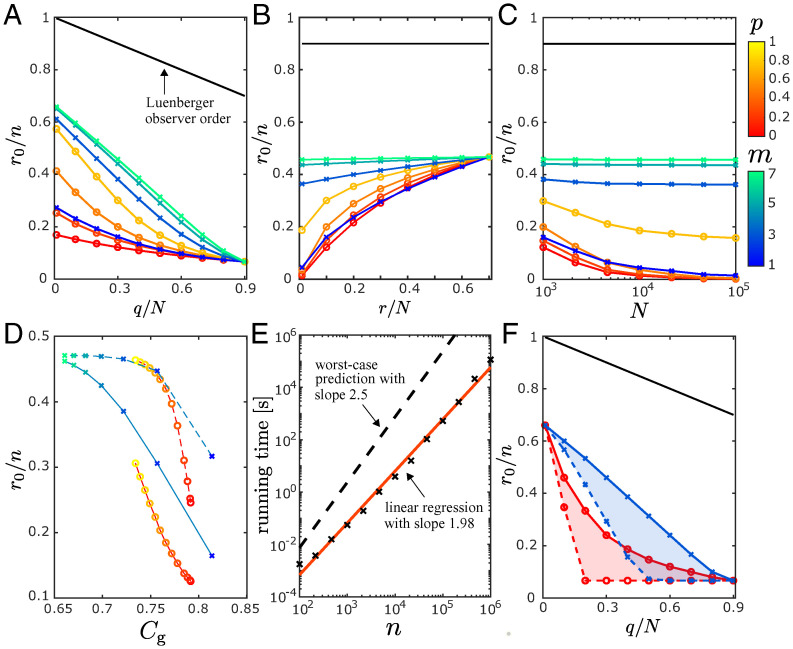Fig. 3.
Minimum-order functional observer design in large-scale networks. (A–C) Minimum functional observer order r0 (normalized by the system dimension ) as a function of the normalized number of sensor nodes q / N (A), the normalized number of target nodes r / N (B), and the network size N (C). The results are shown for random placement of sensor and target nodes in directed SW and SF networks (color coded by the respective parameters p and m). The other parameters are set to for A, for B, and for C. The black lines indicate the Luenberger observer order for comparison. (D) Normalized order in directed (solid lines) and undirected (dashed lines) SW and SF networks as a function of the generalized clustering of the corresponding undirected graph (Materials and Methods), color coded by p and m for . (E) Running time of Algorithm 2 as a function of n in directed SW networks for . The simulations were implemented in MATLAB, and each network realization was run on a single core of an Intel Xeon Processor E7-8867 v4 at 2.4 GHz. (F) Normalized order as a function of q / N in undirected SW (red; p = 0) and SF (blue; m = 3) networks for randomly (solid lines) and optimally (dashed lines) placed sensors, where . In all panels, each data point corresponds to an average over 100 independent realizations of the network, target placement, and sensor placement (except for the optimal placement in F).

